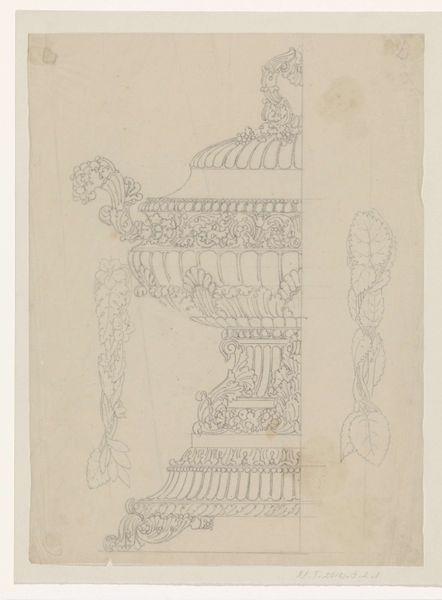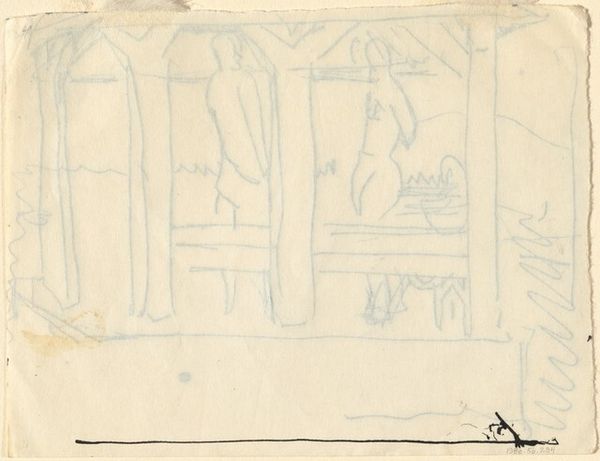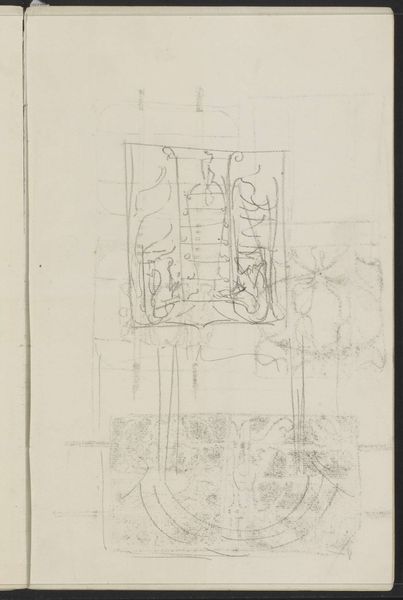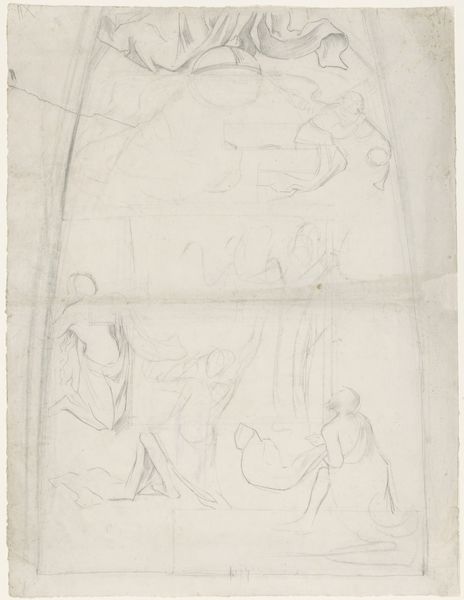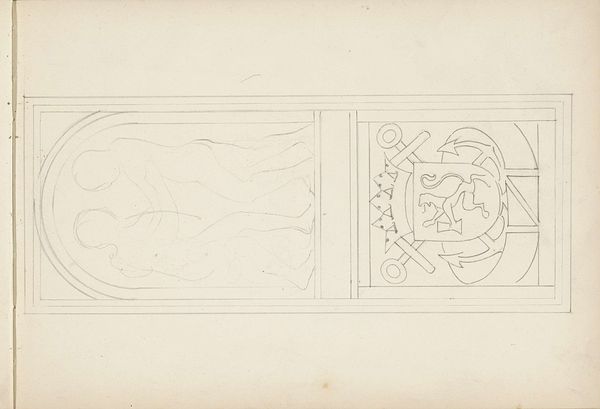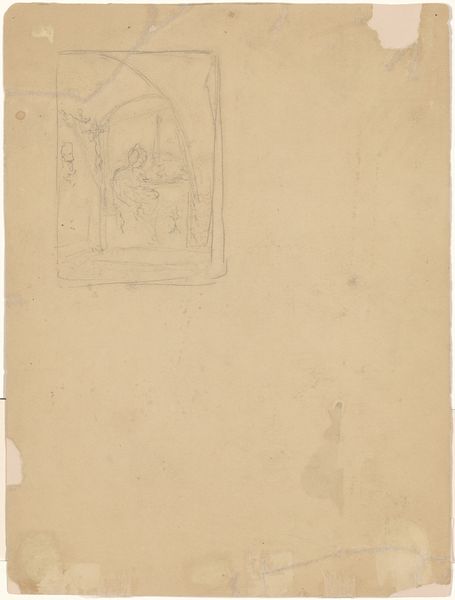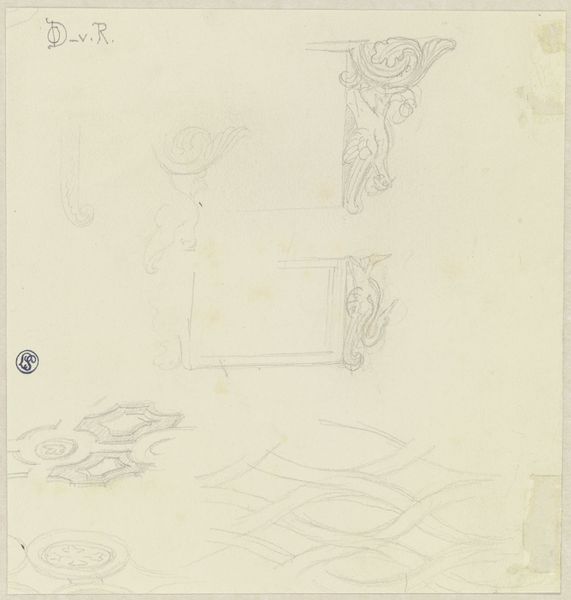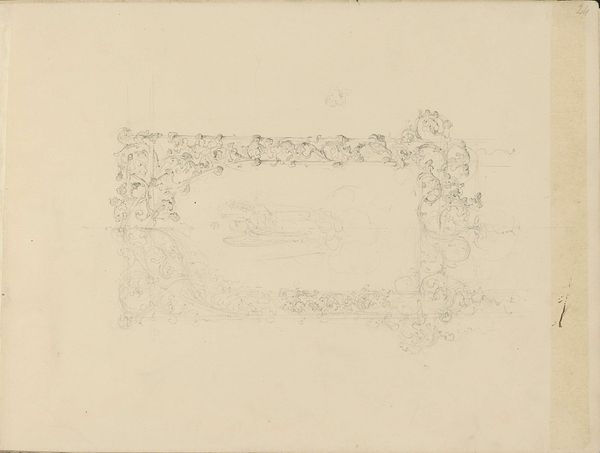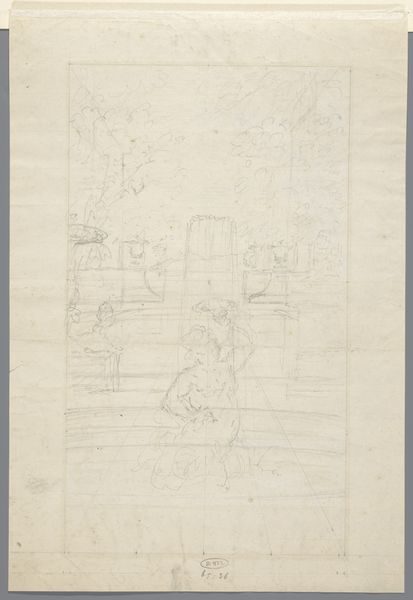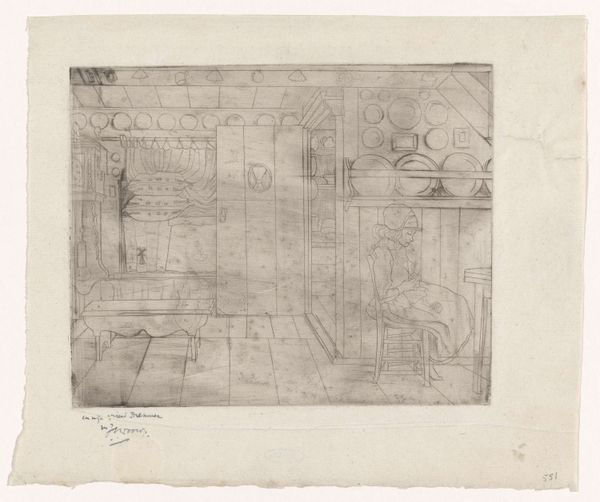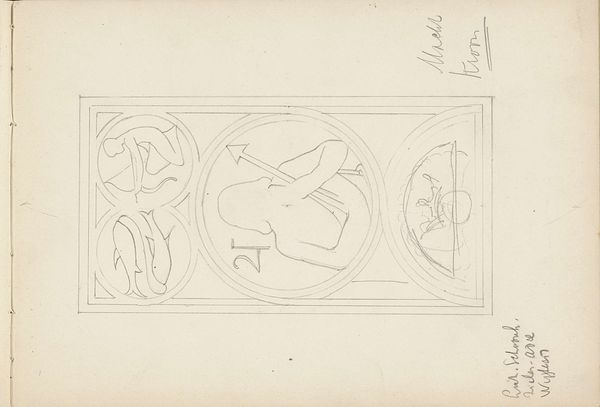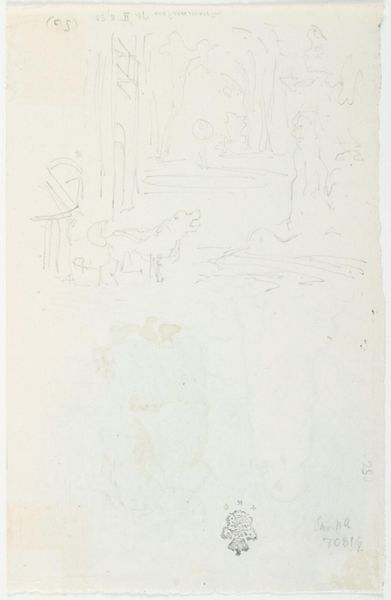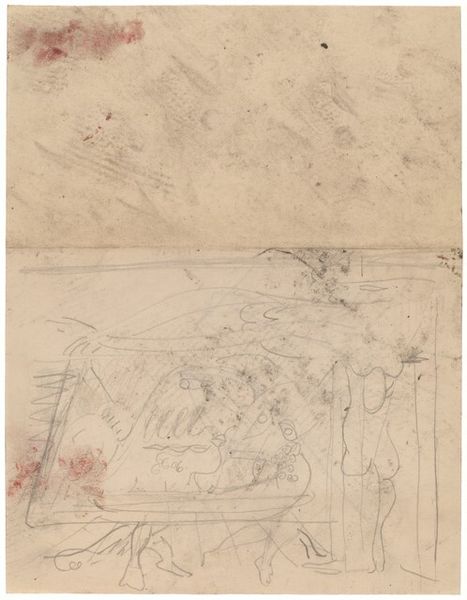
Ontwerp voor een titelblad voor het gedenkboek der Keuzetentoonstelling v. Hollandse schilderkunst: koe staande bij een water voor knotwilgen c. 1869 - 1925
0:00
0:00
drawing, pencil
#
drawing
#
quirky sketch
#
pen sketch
#
landscape
#
personal sketchbook
#
sketchwork
#
ink drawing experimentation
#
pen-ink sketch
#
pencil
#
line
#
pen work
#
sketchbook drawing
#
storyboard and sketchbook work
#
sketchbook art
#
realism
Dimensions: height 434 mm, width 296 mm
Copyright: Rijks Museum: Open Domain
Editor: This is “Ontwerp voor een titelblad voor het gedenkboek der Keuzetentoonstelling v. Hollandse schilderkunst: koe staande bij een water voor knotwilgen”–a design for a title page–made by Antoon Derkinderen, likely sometime between 1869 and 1925. It’s a pencil and ink drawing. I find it strangely evocative, despite its sketch-like quality. It feels like a memory… almost dreamlike. What visual language strikes you? Curator: I am intrigued by the way Derkinderen intertwines the image of the cow with what seems to be the Dutch landscape, which carries a heavy emotional weight to those familiar with that part of the world. Consider how often the cow appears in Dutch Golden Age paintings. This symbol seems to be connected to prosperity, to the land itself, and of course, to a specific sense of "Dutchness," wouldn't you say? Editor: Yes, absolutely! It’s almost like a national emblem, repeated in visual culture and collective memory. But what’s the effect of rendering it so… delicately? It's just a sketch. Curator: Precisely! The sketchiness enhances that feeling of nostalgia, as if the artist were recalling a half-forgotten scene. What symbols and imagery resonate with your own personal background? Think about those images which speak to you and your family about your home culture. This is a similar experience, I believe. Editor: That makes sense. Like a faded photograph. Now, considering it was meant as a title page, do you think the symbolism would still be clear to viewers at the time, even in this draft form? Curator: I believe so. These symbols have power because of cultural repetition. This echoes throughout the centuries. The image reminds them who they are, where they come from, and how important these cultural values continue to be. Editor: That's fascinating. I had considered the image simplistic. Now I appreciate it is not merely a cow in a field but so much more, steeped in historical meaning and cultural identity. Curator: Indeed. Visual language can whisper volumes.
Comments
No comments
Be the first to comment and join the conversation on the ultimate creative platform.
